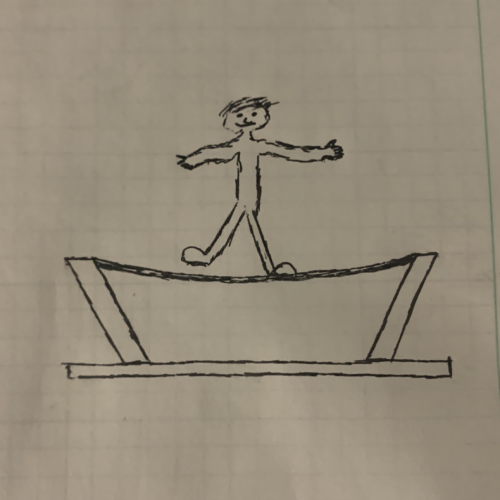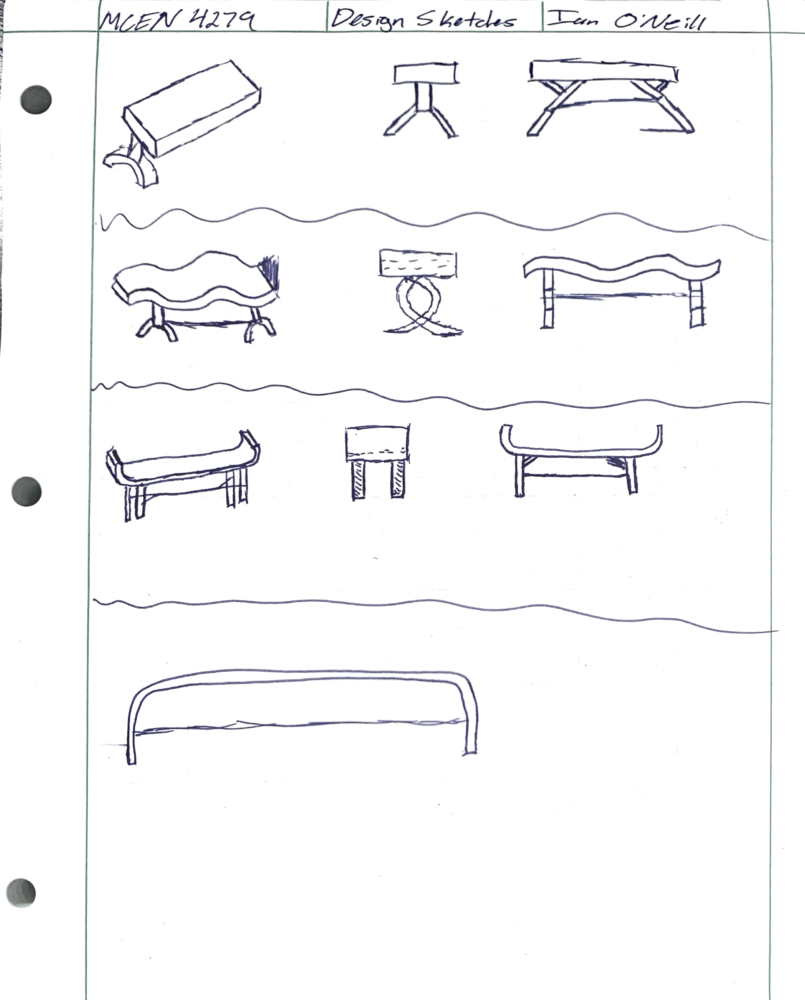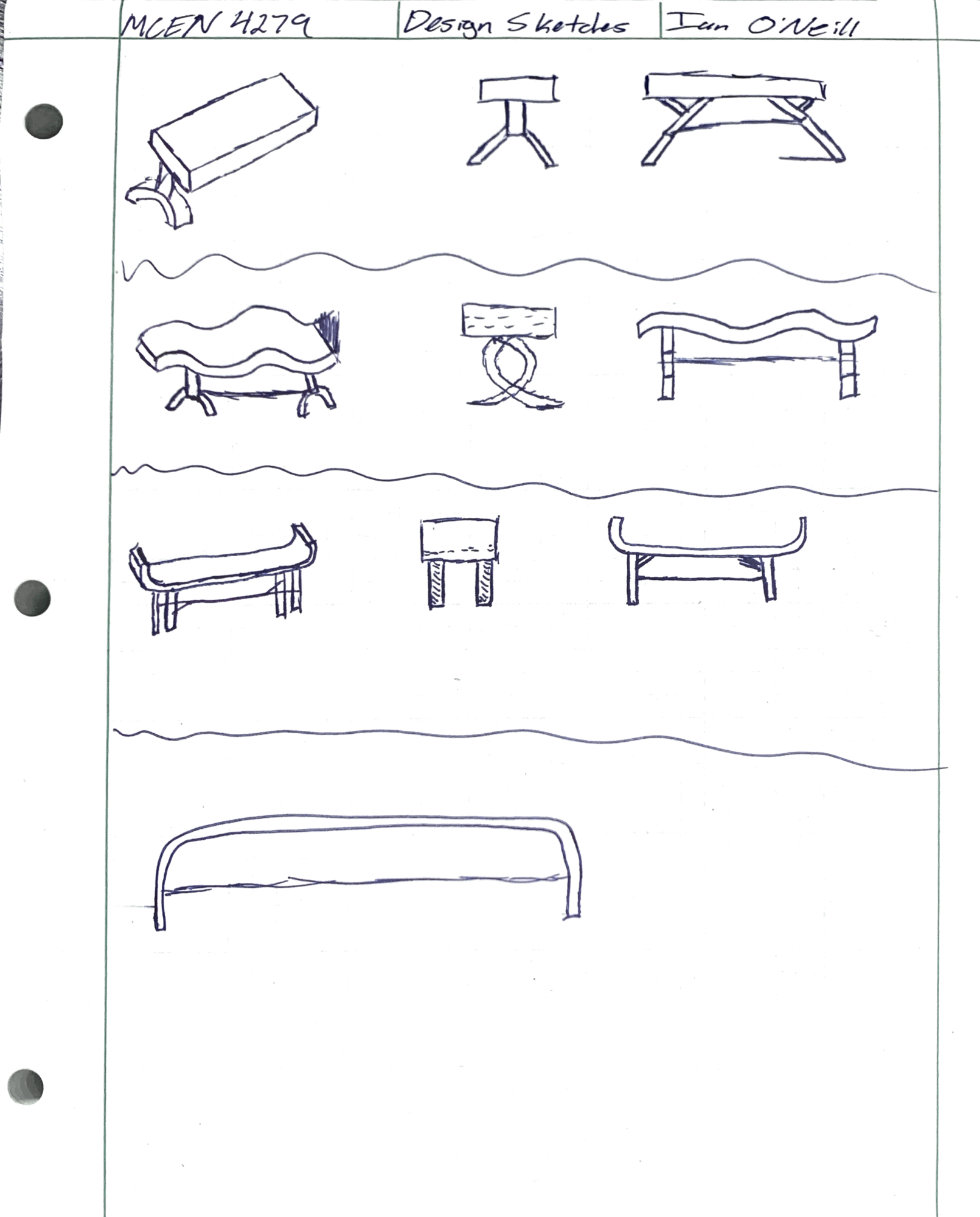Project Refresh
From my previous post, my design intention is to make a reversible table bench. When I say reversible, this means that right side up is meant for sitting at a table, but when upside down, it can be used as an indoor slackline!

The current style I am planning to design according to is mid century modern. This is due to the color choice, material choice, and minimalist design.
Alternative Designs

Above are a series of alternative designs which came to mind. The first design is most similar to my current working idea. Designs 2 and 4 however, are some notably different designs which fall under different aesthetics.
Design 2: Organic
Design two shifts away from using a standard bench top as the seating area and creates a more organic shape to the bench. It also uses a more organic style of legs to prop it up. I determined that this would fall under an organic aesthetic due to the types of curves which are present in both the bench top and the legs. This design would look great as a statement piece, but would not be so great at seating a large number of people. The curves throughout would not be conducive to having more than 2-3 people on this bench, regardless of the fact that it is long enough.
Additionally, this bench would be difficult to manufacture with specific reference to the bends in the benchtop. Due to the waves throughout the bench, it would require capabilities to be able to bend this shape. Even if the bench were bent, in order to support a slackline’s worth of tension, it would need to be supported along its length by a piece of steel or similar. To optimize its look, the steel should be bent the same as the table. While not impossible, this would prove difficult to manufacture.
Design 4: Minimalist / Art Deco
Design 4 could fall into any number of categories, but I have narrowed it down to minimalism or art deco. This design utilizes a single piece of wood as its main support structure. The simple design, single material and color, and minimal patterns are what would classify this as minimalist. Alternatively, it could be classified as art deco due to its unique curved form factor. Regardless of the exact aesthetic, this would be a very cool design as well.
Unfortunately, this design presents a number of challenges which are likely outside the scope of my skills. First and foremost is the strength. In order to achieve a bench which is strong enough to support someone slacklining on it would require an immensely strong slab of wood. Utilizing thicker and thicker wood means two things. It becomes significantly more expensive and difficult to bend to the final position.
The second major design problem is bending the wood. I have never bent wood to that extent, nor do we have the capabilities on campus. This would require the increased cost of utilizing a separate wood shop to complete the bending.
Conclusion
Overall, I am very happy with my current design, however, I am looking in to alternatives which I could use to modify the design. If I am able to combine any of these designs, I plan to do so.


4 Comments. Leave new
Hey Ian, I love this idea! I really like the dual usage of your artifact with being a bench and a slack line. Do you know what kind of joinery you’ll be using to attach the legs to the bench?
Hi Trent, currently I’m planning to attach the legs with a flat plate which screws into threaded inserts already within the bench top. Part of the intention behind the design is to make the bench base standalone and separable from the top. This is mostly to provide the proper support but ends up allowing it to be a standalone structure as well.
Ian, I enjoyed reading your post and am excited to see how your final product turns out. I personally really enjoy the idea of using aspects from the organic aesthetic, but I understand the manufacturing difficulties that come along with it. I know wood bending can be tough, but I think Josh in the Idea Forge woodshop could help you out. Best of luck!
Hi Oliver, thanks! I did have a lot of different ideas of what I could do with the benchtop, however, I quickly realized that we don’t have easy access to the equipment needed to do these more complex geometries.